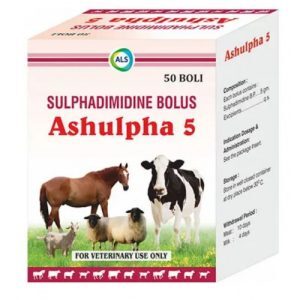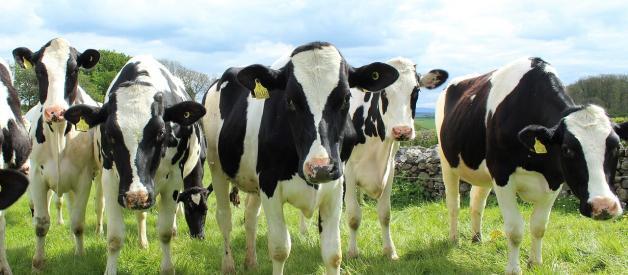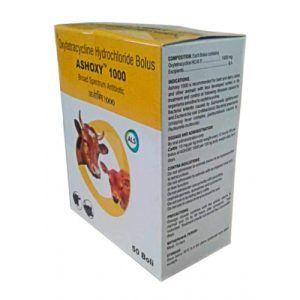Table of Contents
Cattle farming plays a crucial role in the agricultural industry, providing meat, milk, and various byproducts. However, cattle are susceptible to infectious diseases like any other animal population. These diseases can significantly impact their health, well-being, and overall productivity. In such cases, antibiotics are often used to combat bacterial infections and aid recovery. This article sheds light on some of the cattle’s most common infectious diseases that may require antibiotic treatment.

What Are the Most Common Infectious Diseases in Cattle?
Infectious diseases pose a considerable threat to cattle health and productivity. Veterinary antibiotics used in cattle are vital in treating bacterial infections, reducing symptoms’ severity, and preventing disease spread within the herd. Here are the most widespread infectious diseases in cattle.
Bovine Respiratory Disease (BRD)
Bovine Respiratory Disease, commonly known as BRD or pneumonia, is one of the cattle’s most prevalent and economically significant infectious diseases. A combination of bacteria, viruses, and stress factors causes BRD. The primary bacterial agents of BRD are Mannheimia haemolytica, Pasteurella multocida, and Histophilus somni. Antibiotics for bacterial pneumonia in cattle and antibiotics for respiratory infections in cattle, such as tetracyclines, macrolides, and penicillins, are often administered to combat the bacterial component of the disease. Ask your veterinarian to choose the best antibiotic for BRD in cattle and the best antibiotic for pneumonia in cattle.
Mastitis
Mastitis is an inflammation of the udder, primarily caused by bacterial infections. It affects dairy and beef cattle, reducing milk production, poor milk quality, and increased somatic cell count. The most common bacteria responsible for mastitis in cattle include Staphylococcus aureus, Streptococcus agalactiae, and Escherichia coli. Intramammary antibiotics used to treat mastitis in cattle, such as penicillin-based drugs, cephalosporins, and macrolides, are the best antibiotics for mastitis in cattle and prevent the spread of infection within the herd.
Foot Rot
Foot rot is a highly contagious bacterial infection affecting the hooves of cattle. It is caused by a combination of bacteria, primarily Fusobacterium necrophorum and Dichelobacter nodosus. Foot rot can cause severe lameness and decreased mobility, reducing feed intake and weight loss. Antibiotic treatment is typically employed to control the infection and aid healing. Commonly used antibiotics for foot rot in cattle include tetracyclines and macrolides. They are considered the best antibiotics for BRD in cattle.
Enteric Infections
Enteric infections, such as Salmonellosis and Escherichia coli infections, can cause significant gastrointestinal distress in cattle. These infections are often associated with contaminated feed, water, or unsanitary conditions. Antibiotics for diarrhea in cattle and antibiotics for salmonellae in cattle, such as fluoroquinolones and sulfonamides, may be prescribed to combat the bacterial pathogens responsible for enteric infections and prevent disease spread within the herd.
However, it is essential to use antibiotics judiciously and under veterinary guidance to minimize the risk of antibiotic resistance and not overuse antibiotics in cattle. Also, discuss with the veterinarian the subtherapeutic use of antibiotics in cattle. Proper herd management practices, biosecurity measures, and vaccination programs can also help mitigate the occurrence and impact of infectious diseases in cattle.
What Is Antibiotic Treatment?
How are antibiotics used in cattle?
Antibiotic treatment for cattle involves the administration of antibiotics to combat bacterial infections and promote the recovery of sick animals. Antibiotics are medications that can inhibit the growth or kill bacteria, helping to eliminate or control the infection. Here are some key aspects of antibiotic treatment for cattle:
Before initiating antibiotic treatment, a proper veterinary diagnosis is essential. A veterinarian will assess the animal’s condition, conduct diagnostic tests, identify the causative agent of the infection and select the most appropriate antibiotic, dosage, and duration of treatment.
The dosage and duration of antibiotic treatment depend on several factors, including the severity of the infection, the animal’s age and weight, and the specific antibiotic being used. Follow the veterinarian’s instructions and complete the entire course of antibiotics to ensure the effective elimination of the infection and minimize the development of antibiotic resistance.
When administering antibiotics to food-producing animals, consider withdrawal periods. The withdrawal period of antibiotics in cattle is the specified time after antibiotic administration. The animal should not be sent for slaughter, and its milk should not be used for human consumption during this period. This period allows for eliminating the antibiotic residues from the animal’s body, ensuring food safety.
Classes of Antibiotics for Cattle
Various classes of antibiotics are used in farm animals, including cattle, to treat bacterial infections and promote animal health.
|
Antibiotic Class |
Examples of Antibiotics |
Mechanism of Action |
Common Uses in Farm Animals |
|
Penicillins |
Penicillin G, Amoxicillin |
Inhibit bacterial cell wall synthesis |
Respiratory infections, mastitis, gastrointestinal infections |
|
Tetracyclines |
Oxytetracycline, Chlortetracycline |
Inhibit bacterial protein synthesis |
Respiratory infections, urinary tract infections, bacterial diseases |
|
Macrolides |
Erythromycin, Tulathromycin |
Inhibit bacterial protein synthesis |
Respiratory infections, mastitis, gastrointestinal infections |
|
Fluoroquinolones |
Enrofloxacin, Danofloxacin |
Interfere with bacterial DNA synthesis |
Respiratory infections, urinary tract infections |
|
Sulfonamides |
Sulfadimethoxine, Sulfamethoxazole |
Inhibit bacterial folic acid synthesis |
Respiratory infections, gastrointestinal infections |
|
Aminoglycosides |
Gentamicin, Neomycin |
Inhibit bacterial protein synthesis |
Respiratory infections, gastrointestinal infections |
|
Cephalosporins |
Ceftiofur, Cephalexin |
Interfere with bacterial cell wall synthesis |
Respiratory infections, mastitis, skin and soft tissue infections |
Please note that this table provides a general overview of the most commonly used antibiotics in cattle and does not include all antibiotics used in farm animals. The specific antibiotics used may vary depending on regional regulations, specific bacterial infections, and veterinary recommendations.

When to Give an Antibiotic to Cattle
Knowing when to give an antibiotic to cattle is essential to treat bacterial infections while minimizing unnecessary use effectively. Antibiotics should be administered to cattle under veterinary guidance based on a proper diagnosis and evaluation of the following factors.
Clinical Signs and Symptoms
Specific clinical signs and symptoms in cattle can indicate a potential bacterial infection. These signs may include:
- fever;
- decreased appetite or reduced feed intake;
- lethargy or decreased activity levels;
- respiratory distress (coughing, nasal discharge, labored breathing);
- lameness or difficulty in movement;
- swelling, redness, or discharge at the site of infection (e.g., udder, hooves);
- digestive disturbances (diarrhea, abnormal feces);
- decreased milk production or poor milk quality (in dairy cattle);
- visible abscesses or localized infections.
These signs and a thorough physical examination by a veterinarian can help determine if an antibiotic is necessary.
Veterinary Diagnosis
Obtaining a veterinary diagnosis before administering antibiotics to cattle is crucial. A veterinarian will assess the animal’s overall health, conduct diagnostic tests (such as blood tests, bacterial culture, or imaging), and identify the causative agent of the infection. These tests help identify the specific bacteria causing the infection and determine their sensitivity to different antibiotics. This information is crucial for selecting the most effective antibiotic and ensuring targeted treatment.
Severity and Persistence of Infection
The severity and persistence of the infection also play a role in determining whether to administer antibiotics. Severe infections, especially those that affect the animal’s well-being or productivity, often require antibiotic intervention. Antibiotic treatment may be necessary if an infection persists despite other supportive measures or poses a risk to the animal’s health or the herd’s welfare.
Individual Animal Factors
Animal factors, such as age, overall health status, and immune function, may influence the decision to administer antibiotics. Animals with compromised immune systems or those at higher risk for developing severe complications may require antibiotics earlier or more aggressively.
Responsible antibiotic use in beef cattle includes avoiding unnecessary antibiotics, following veterinary guidance, and adhering to dosage and withdrawal period instructions. This approach helps prevent the development of antibiotic resistance and ensures the welfare of the animals being treated.
How Are Antibiotics Given to Cattle?
Antibiotics can be administered to cattle through various routes depending on the specific circumstances and the antibiotic type.
- Many antibiotics are available in injectable forms and can be administered intramuscularly (into the muscle) or subcutaneously (under the skin). Injectable antibiotics provide a systemic effect, reaching the bloodstream to combat infections throughout the body.
- Some antibiotics are formulated as oral suspensions, powders, or pills, which can be given directly to cattle by mouth. This method is commonly used when the animal can consume the medication voluntarily or when mixing the antibiotic for cattle with feed or water is practical.
- Antibiotics used for treating mastitis in dairy cattle are often administered through intramammary infusions. Antibiotics approved for use in dairy cattle are placed directly into the udder through the teat canal, allowing them to reach the infected quarters and combat the bacteria causing the mastitis. Check with your veterinarian antibiotics commonly used in dairy cattle and the role of antibiotics in dairy cattle management.
- Particular skin or wound infections may be treated with topical antibiotics. These antibiotics are applied directly to the affected area through ointments, sprays, or powders. Topical application helps deliver the medication directly to the site of infection.
- In cases of reproductive tract infections or postpartum uterine infections, antibiotics may be given directly into the uterus through intrauterine infusions. This method helps combat bacteria within the reproductive tract and promotes healing.
The specific method of antibiotic administration will depend on factors such as the nature of the infection, the antibiotic formulation, and the accessibility of the affected area.
Are Antibiotics Given to Cattle the Same Ones Used in People?
While some antibiotics used in the cattle industry may belong to the same class as those used in humans, the specific formulations and approved antibiotics may differ. Certain antibiotics commonly used in cattle, such as tetracyclines or penicillins, may have similar counterparts used in human medicine. Still, they might have different formulations or variations specific to each species. It’s important to note that the use of antibiotics in animals is regulated and approved for veterinary purposes, ensuring their safety and efficacy for animal health.
Antibiotics Commonly Used in Cattle
Here is our top 3 recommended antibiotics used in cattle.
Ashulpha (Sulphadimidine), 5g
 Ashulpha is an antibiotic formulation containing Sulphadimidine. It is commonly used in cattle to treat respiratory and gastrointestinal infections caused by susceptible bacteria.
Ashulpha is an antibiotic formulation containing Sulphadimidine. It is commonly used in cattle to treat respiratory and gastrointestinal infections caused by susceptible bacteria.
The active ingredient in Ashulpha is Sulphadimidine, which belongs to the class of sulphonamides. Sulphonamides inhibit bacterial folic acid synthesis, leading to the suppression of bacterial growth and the elimination of the infection.
Ashulpha is used when cattle experience bacterial infections that affect their respiratory or gastrointestinal systems. It is typically administered orally or through injections, as directed by a veterinarian. The timing of administration depends on the severity and duration of the infection, as determined by the veterinarian’s diagnosis.
Benefits of this antibiotic in cattle: Ashulpha can help combat bacterial infections in cattle, thereby improving their health and preventing the spread of the infection to other animals. Targeting susceptible bacteria, it supports the recovery process and promotes animal well-being.
Differences from Other Similar Remedies: Ashulpha is formulated explicitly with Sulphadimidine, distinguishing it from other antibiotics or sulphonamide formulations used in cattle.
Ashoxy (Oxytetracycline + Gentian Violet), 200ml
Ashoxy is an antibiotic combination product. It is commonly used in cattle to treat respiratory infections, foot rot, and mastitis caused by susceptible bacteria.
Ashoxy contains Oxytetracycline, which inhibits bacterial protein synthesis, and Gentian Violet, which possesses antiseptic and antifungal properties. Together, they provide a synergistic effect against bacterial infections.
It is typically administered through injections, as directed by a veterinarian. The timing of administration depends on the severity and duration of the infection, as determined by the veterinarian’s diagnosis.
Benefits: Ashoxy’s combination of Oxytetracycline and Gentian Violet provides a broad-spectrum effect against susceptible bacteria, helping to combat infections and promote healing in cattle. It targets the causative bacteria, reducing the severity of the infection and preventing further complications.
Differences from Other Similar Remedies: The combination of Oxytetracycline and Gentian Violet in Ashoxy distinguishes it from other antibiotics or antiseptic formulations used in cattle. The specific formulation and dosage may vary, and following the veterinarian’s guidance for optimal use is essential.
Ashoxy 1000 (Oxytetracycline), 1g
Ashoxy 1000 contains oxytetracycline and is commonly used in cattle to treat respiratory infections, foot rot, and other bacterial infections caused by susceptible bacteria.
The active ingredient in Ashoxy 1000 is oxytetracycline, which inhibits bacterial protein synthesis, leading to the suppression of bacterial growth and the elimination of the infection.
Ashoxy 1000 is used when cattle experience bacterial infections affecting their respiratory system, foot area, or other body parts. It can be administered through injections or orally, as directed by a veterinarian. The timing of administration depends on the severity and duration of the infection, as determined by the veterinarian’s diagnosis.
Benefits: Ashoxy 1000’s active ingredient, oxytetracycline, provides a broad-spectrum effect against susceptible bacteria, helping to combat infections and promote healing in cattle. It targets the causative bacteria, reducing the severity of the infection and preventing further complications.
Differences from Other Similar Remedies: Ashoxy 1000 distinguishes itself from other similar remedies by containing oxytetracycline as the active ingredient. The specific formulation and dosage may vary, and following the veterinarian’s guidance for optimal use is essential.
Please note that the information provided here serves as a general overview, and it is essential to consult a veterinarian for accurate dosage instructions, specific treatment guidelines, pregnancy-safe antibiotics in cattle, and any regional variations in the use of these antibiotics in cattle.
FAQ
How long do antibiotics stay in cattle?
The duration that antibiotics stay in the system of cattle can vary depending on several factors, including the specific antibiotic used, the dosage administered, and the animal’s metabolism. Generally, antibiotics are eliminated from the body of cattle within a few days to a couple of weeks after the last dose. However, it is essential to follow withdrawal periods specified on the product label or as advised by the veterinarian to ensure that any antibiotic residue is no longer present in the animal’s tissues or products (such as milk or meat) before they are consumed or used.
What antibiotics are used for mastitis in cattle?
Antibiotics commonly used for the treatment of mastitis in cattle include:
- Penicillin-based antibiotics, such as penicillin G or ampicillin, are often used for mastitis treatment. They are effective against many types of bacteria commonly associated with mastitis.
- Cephalosporin antibiotics, like cephapirin, have also been used for mastitis treatment, especially for certain resistant bacterial strains.
- Macrolide antibiotics, such as erythromycin or tylosin, may be utilized for mastitis treatment in specific cases.
The specific antibiotic chosen for mastitis treatment depends on factors such as the causative bacteria, the severity of the infection, and the veterinarian’s assessment.
What antibiotic is recommended for the treatment of pinkeye in cattle?
In cattle, oxytetracycline is commonly recommended for treating pinkeye (infectious bovine keratoconjunctivitis). Oxytetracycline is effective against the bacteria, such as Moraxella bovis, that often cause pinkeye. It can be administered as an injection or an eye ointment directly onto the affected eye. The veterinarian will determine the best oral antibiotic for pink eye in cattle, dosage, and treatment duration based on the infection’s severity and individual circumstances. Other antibiotics, such as florfenicol or tulathromycin, may also be used in some instances or if oxytetracycline is ineffective.

























